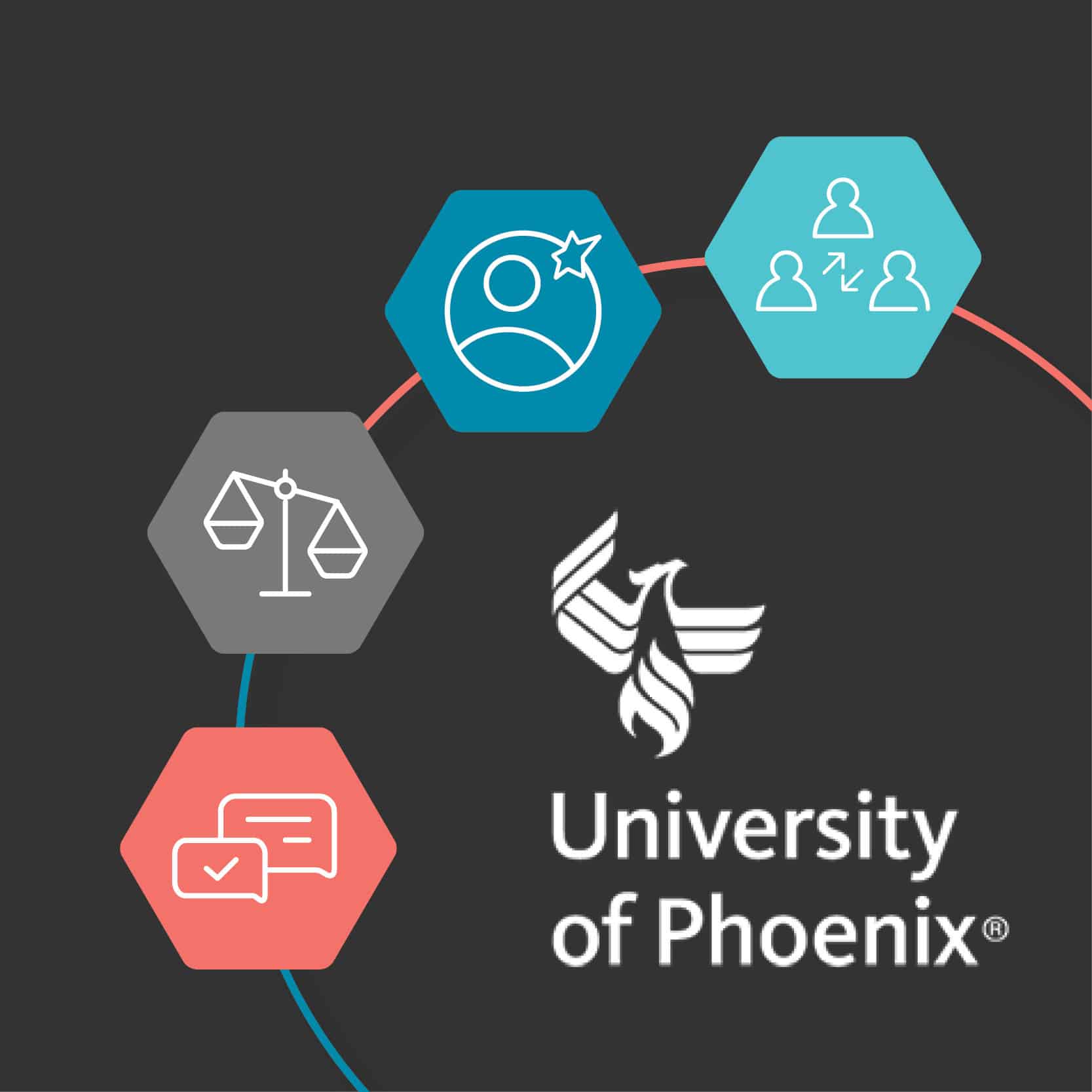What do you do when you need to overhaul your organizational culture and improve the employee experience? For Jeff Andes, vice president of talent management at the University of Phoenix, part of the answer was to rethink and redesign the way the institution handled employee performance reviews. Through a partnership with Betterworks, Andes and his team have flipped the once dreaded annual performance review process, turning it into an engaging and efficient program he calls “Everyday Performance Management.”
Independent research firm 3Sixty Insights recently spent time with Andes to understand the goals, challenges, and processes the University undertook to help move the needle on culture and deliver a contemporary performance management process that improves the employee experience and gives employees skin in the game when it comes to their professional development. (Read 3Sixty’s comprehensive story.)
The road to a better employee experience
When University of Phoenix traded hands and came under the ownership of a private equity firm in 2017, the institution began a series of cultural transitions that would transform it from a “stuffy, rigorous culture,” according to Andes, to one that was transparent and employee-first. Among the many changes the new president wanted to make was to eliminate the widely despised, time-consuming, and top-down annual performance review. In its place, he sought a solution that not only mirrored current workforce needs and practices but also upheld the University’s core value of honesty.
Andes couldn’t have agreed more.
Related Content: How your culture can drive business results
Conversations serve as the centerpiece of performance management
Instead of force-fitting a program into a platform, Andes did the opposite: He designed the program he wanted and then explored solutions that met the University’s vision. Flexible, employee-centric conversations served as the nucleus.
“We wanted a platform for everyday performance development conversations, one that would allow for more focus on dialogue as opposed to the rigor of outdated annual reviews. That’s where Betterworks rose to the top,” Andes told 3Sixty.
Andes and his team designed a program to enable continuous performance enablement, a concept further explained in 3Sixty’s Research Note. Simply put, this is about elevating the employee experience. It puts employees at the center, typically by giving them:
- tools and resources to know how they’re doing in real-time.
- autonomy to adjust their goals and activities to ensure that their work continues to help the business achieve its strategic goals.
- growth and learning opportunities that help them achieve their personal and professional ambitions.
The version of continuous performance enablement rolled out by the University of Phoenix promotes casual, “ongoing and in-the-moment” conversations with scheduled quarterly check-ins between managers and their reports. These can be arranged by either party, thus moving beyond a stale recitation of past accomplishments by the employee toward a meaningful dialogue. While only one in four of these scheduled conversations must be documented, managers and their employees can share questions and notes, which are visible to each in the Betterworks solution. The program is designed to promote transparency, help participants think more deeply about what they want the conversations to accomplish, and enable everyone to make sure that they are on track and on the same page.
Related content: 5 Strategies to improve conversations at work
How monolithic HCM systems fall short on the employee experience
University of Phoenix uses SAP SuccessFactors as its learning management system, but decided to replace the SuccessFactors’ performance management module with the Betterworks solution. End-to-end HCM systems are typically used for backend HR activities, employee self-service, and compliance. But as top-down systems, these are not designed to foster the employee experience — to accommodate meaningful conversations, development, feedback, and check-ins — even though they often include a performance management module in the platform.
As a “better together” solution, Betterworks can be integrated into large HCM systems to deliver modern performance management seamlessly.
For Andes, it was also important to have a system that could withstand change management fatigue. Employees were already weary from having to adapt to numerous new platforms. Fortunately, the Betterworks system proved to be intuitive and easy to learn, fitting into the flow of work for employees.
Related content: Josh Bersin on enabling performance in the flow of work
Advancing the employee experience at all levels
Since implementing the Betterworks solution, the University has seen a rebirth of participation and interest in the performance review process that has had a cascading effect at all levels of the organization. These include:
- greater transparency.
- promoting a culture of feedback.
- a doubling of employee participation in performance reviews since the replacement of the SuccessFactors module.
- higher employee engagement and confidence in management.
- eliminating the burden of annual reviews that distracted employees from their students at a busy time of year.
- lighter administrative lift for HR.
To learn more about University of Phoenix’s evaluation process and details about the results seen to date, start with the 3Sixty Insights case study, Anatomy of a Decision. Andes explains how the University reimagined work and helped transform its culture with modern performance management in this 3Sixty podcast. Gain a deeper understanding of how continuous performance enablement can help organizations drive engagement and retention, and align personal and organizational performance in the 3Sixty Insights Research Note.


